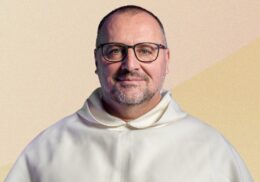Amerykańskie czasopismo “First things” zaprosiło mnie do debaty na temat przyszłości Kościoła i poprosiło o tekst na temat liturgii. Poniżej pierwsze akapity tego tekstu; całość – wraz z czteroma innymi głosami – można znaleźć tutaj: The Future of The Catholic Church by Various | Articles | First Things.
In many places, the most serious, conscious and active Catholics are those who gather every week at their nearest Tridentine Mass. They can expect a solemn, even beautiful celebration of the liturgy—often with Gregorian chant—and a theologically serious homily, full of respect for the traditional teaching of the Church. In the confusion and chaos of the modern world that can be felt in our parishes, convents and other Catholic communities, the small communities of the Tridentine rite provide their members with necessary intellectual support and formation, as well as inter-personal relationships and friendships. Notwithstanding the valid criticisms of these groups—which I will return to—there is surely something to be learned from them.
The spirit of these groups has something in common, in fact, with the student groups led by the young Karol Wojtyła in 1950s Krakow. On the summer kayaking trips which have entered into legend, Wojtyła would give everyone a small bilingual missal in which it was possible to follow the entire text of the Tridentine Mass in Polish. Mass was celebrated every morning wherever the group spent the night: in forests, in meadows, on the shore of a lake. The altar was built every day by the students from whatever was available: branches from the forest, even the kayaks themselves. Wojtyła usually celebrated Mass facing the students, reading the liturgical texts in Latin and preaching in Polish.
In one of his earliest published works, written for the Polish pastoral review Homo Dei in 1957, Wojtyła emphasized that active holidays in the bosom of nature—in the forest, by the lake or by the sea—are an ideal way to introduce the mysteries of the faith, especially to the young. “An altar on oars, an altar on snow, an altar on backpacks—living nature (not only the product of human art) takes part in the sacrifice of the Son of God. Holy Mass becomes a morning prayer and the first thing we do together after waking up. A few words: a thought for the whole day”.
The point was not to surprise people with an unconventional or showy celebration of Holy Mass. The point was for camp participants to understand that Eucharistic celebration can and should be an integral part of their everyday life—“the fount and apex of the whole Christian life,” as Vatican II would emphasize a decade later in its constitution on the Church Lumen gentium.
Young Karol Wojtyła’s convictions about the shape of the liturgy were at the heart of the liturgical renewal movement in the Church in the first part of 20th century leading to the Second Vatican Council and its constitution on liturgy Sacrosanctum Concilium. All the main representatives of the liturgical movement from different countries—Dom Prosper Guéranger, Odo Casel, Dom Lambert Beauduin, Romano Guardini, Louis Bouyer—emphasized the need for the more conscious participation of the faithful in the liturgy. Liturgy had to be again understood as celebration of the entire people—in Greek, leitourgia as work (ergon) of the people (laos)—and not as a special technical performance done by a single professional.
The constitution of the Second Vatican Council on liturgy Sacrosanctum Concilium is a very good document. Rooted in a profound Christological, Trinitarian and ecclesial theology of liturgy, it proposes a renewed liturgy as essential to the solid formation of the people of God and their introduction to the Christian mystery and a Christian way of life.
As often with Vatican II, however, one is faced with the question: If its documents were so good, what caused the havoc, confusion and deformation of the post-conciliar period? The answer lies in the mistaken understandings of conciliar aggiornamento that determined the direction and speed of post-conciliar changes. The idea of Vatican II as a new beginning caused a break with the Catholic heritage: The Church seemed ashamed of her past, while the future was seen as an adaptation to the secular. Ressourcement—intended to enrich and reinforce Church’s teaching—led to theological pluralism that seemed to question and undermine any traditional Catholic truth, and the uniqueness of Christian faith and the Catholic Church disappeared in an often nebulous, superficial and rushed process of ecumenical and interreligious dialogue. The list of bizarre post-conciliar mishaps is endless.












Comments - No Responses to “On liturgy”
Sorry but comments are closed at this time.